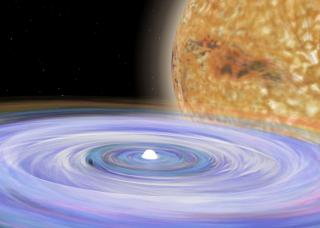Bibcode
Burdge, Kevin B.; Prince, Thomas A.; Fuller, Jim; Kaplan, David L.; Marsh, Thomas R.; Tremblay, Pier-Emmanuel; Zhuang, Zhuyun; Bellm, Eric C.; Caiazzo, Ilaria; Coughlin, Michael W.; Dhillon, Vik S.; Gaensicke, Boris; Rodríguez-Gil, Pablo; Graham, Matthew J.; Hermes, JJ; Kupfer, Thomas; Littlefair, S. P.; Mróz, Przemek; Phinney, E. S.; van Roestel, Jan; Yao, Yuhan; Dekany, Richard G.; Drake, Andrew J.; Duev, Dmitry A.; Hale, David; Feeney, Michael; Helou, George; Kaye, Stephen; Mahabal, Ashish. A.; Masci, Frank J.; Riddle, Reed; Smith, Roger; Soumagnac, Maayane T.; Kulkarni, S. R.
Bibliographical reference
The Astrophysical Journal
Advertised on:
12
2020
Journal
Citations
107
Refereed citations
99
Description
Using photometry collected with the Zwicky Transient Facility, we are conducting an ongoing survey for binary systems with short orbital periods ( ${P}_{{\rm{b}}}\lt 1\,\mathrm{hr})$ with the goal of identifying new gravitational-wave sources detectable by the upcoming Laser Interferometer Space Antenna (LISA). We present a sample of 15 binary systems discovered thus far, with orbital periods ranging from 6.91 to 56.35 minutes. Of the 15 systems, seven are eclipsing systems that do not show signs of significant mass transfer. Additionally, we have discovered two AM Canum Venaticorum systems and six systems exhibiting primarily ellipsoidal variations in their lightcurves. We present follow-up spectroscopy and high-speed photometry confirming the nature of these systems, estimates of their LISA signal-to-noise ratios, and a discussion of their physical characteristics.
Related projects

Binary Stars
The study of binary stars is essential to stellar astrophysics. A large number of stars form and evolve within binary systems. Therefore, their study is fundamental to understand stellar and galactic evolution. Particularly relevant is that binary systems are still the best source of precise stellar mass and radius measurements. Research lines
Pablo
Rodríguez Gil